A few thoughts on Another World (iOS)
April 25th, 2014
Another World is considered a classic in the video games industry, and rightfully so. The cinematic, rotoscoped cutscenes and minimalistic storytelling were groundbreaking for its time. The game established a precedence for new forms of storytelling within the medium and was a strong influence on game designers like Hideo Kojima and Fumito Ueda. Its gameplay, strangely enough, doesn’t seem to get talked about much, and having recently beaten the game, it’s clear why. I’m going to let the examples do the talking for this one. You can see the whole game completed in 8 minutes in the video above.
A frequent lack of form fits function
This is the only guard in the game that can destroy terrain with his grenades. His friends, who throw identical-looking grenades, have no such luck. (To be fair, the floor does appear somewhat damaged, but it’s difficult to make out).
Even though the stalagmites are drawn in the same way as the right-hand platform, you can swim through the stalagmites.
Sometimes you die from a few laser blasts; other times you can be continually blasted for 10 seconds and still walk away without a scratch.
On-screen controller and input buffering
Take a classic game that originally used a controller. Now put that controller on the screen and place your fingers on the digital buttons. As is the case for all iOS games with an on-screen game pad, your fingers naturally obscure the action. The limited view is highly problematic in the shooting sequences, where you’re required to read your enemies and react.
The other problem with digital buttons is the lack of tactile feedback. This issue is conflated by the delayed reaction to your inputs (which, from what I can gather, was part of the original game). You would think that the gameplay challenges would have been designed to work around this obvious limitation, but many of the movement and jumping tasks require accuracy within the range of a few pixels. So when put up against such challenges, it’s easier to walk up close to an obstacle and then jump/run ahead of time than trying to jump while you’re still running. With my fingers blocking the screen and my inputs one step behind the game’s visuals, I sometimes felt that it was better to look away from the screen and just internalise the timing through trial and error.
Poor feedback
Shooting this chandelier will release the obstacle in Buddy’s path, which makes no sense at all as only the chandelier itself drops.
Shooting this power line closes a door later on in the game, which briefly protects you from enemy fire. Problem is, the only way to find out about the relationship between these two elements is to have gone on ahead and failed to escape the enemy fire.
One screen below, there’s a guard walking around. You’re meant to cut the rope so that the ball hits the guard on the head and knocks him out. You can’t see the guard, though; and if you miss, you need to restart from the last checkpoint.
I don’t know what these rooms do either.
Frequent checkpoints = fast turn around = no time to reflect on mistakes = more mistakes = more more wasted time
To minimise the effect of the poor feedback and puzzle design, Another World resorts to frequent checkpoints. While it would be nice if the game was free of all the issues listed above (and more), the checkpoints are appropriate. One side effect, though, is that the fast turn around doesn’t give the player time to reflect on their mistakes, which is an important part of understanding and progressing through any game.
Conclusion
I can respect Another World‘s influence on the gaming landscape. It’s apparent from the first few minutes of play that the game is something else. Its similarities with a number of contemporary indie games is also quite remarkable (Iji, Super Meat Boy, Limbo, etc.). Such is a worrying trend, however, that its poor gameplay has been swept under the rug by many commentators. This is a topic that I explore further with Uncharted 2 in Adventures in Games Analysis: Volume 1. Speaking of which, it should be out soon. Hurray for that.

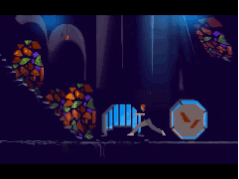
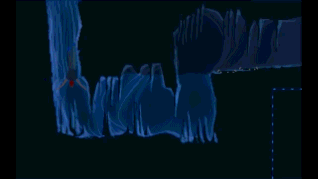
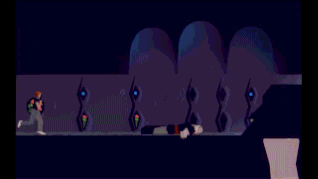

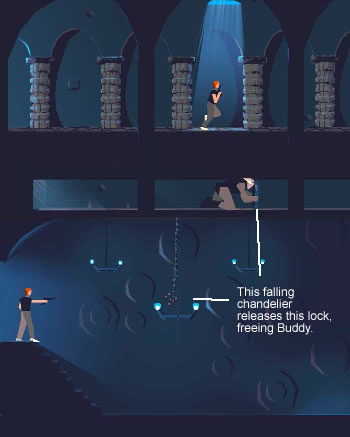

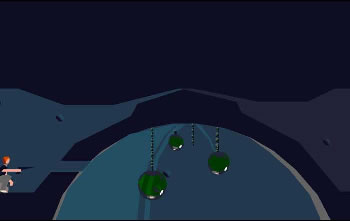



 Game Design Companion: A Critical Analysis of Wario Land 4 - $7.99
Game Design Companion: A Critical Analysis of Wario Land 4 - $7.99 Level Design: Processes and Experiences
Level Design: Processes and Experiences Speed Boost: The Hidden Secrets Behind Arcade Racing Design - $5.99
Speed Boost: The Hidden Secrets Behind Arcade Racing Design - $5.99 Adventures in Games Analysis: Volume I - $5.99
Adventures in Games Analysis: Volume I - $5.99







